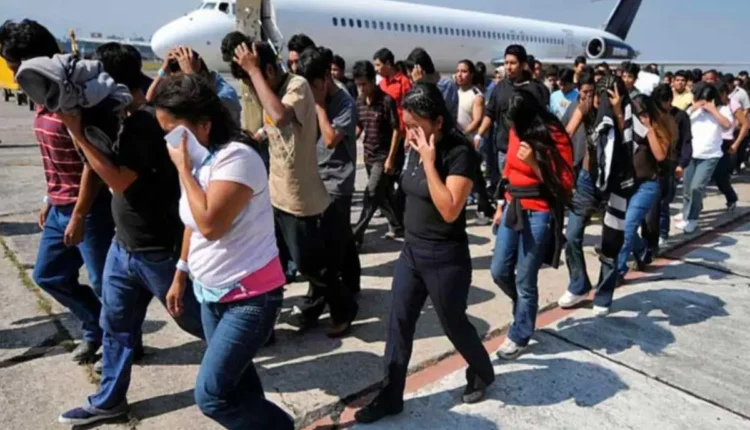Trump’s Plan to End Immigration Protections Could Impact 2.7 Million Lives
Mass Deportations on the Horizon? 2.7 Million May Lose Protection Under Trump
The possibility of a second Trump administration has raised alarm across immigrant communities, as new data reveals that up to 2.7 million people could lose protection from deportation if Donald Trump ends current immigration safeguards.
Programs like Temporary Protected Status (TPS) and Deferred Action for Childhood Arrivals (DACA) may be terminated, potentially exposing millions of long-term U.S. residents to deportation. This move could dramatically alter lives, force families to return to countries in turmoil, and trigger major economic disruptions in the United States.
A Looming Threat: Millions at Risk of Deportation by Trump
A recent analysis by the National Foundation for American Policy (NFAP) highlighted the significant risks posed by the potential policy changes. According to their report, protection from deportation may expire for up to 2.7 million people within the next two years.
This includes individuals under TPS, humanitarian parole programs, and DACA, many of whom have been living in the U.S. for over two decades. The NFAP gathered data from the Department of Homeland Security (DHS) and other sources, underscoring the widespread impact these changes could have.
The removal of these immigration safeguards would add millions to the deportation rolls, marking a substantial shift in U.S. immigration policy. While legal challenges and political gridlock in Congress have provided temporary reprieve for some, the threat remains dire, especially for those whose status is set to expire by 2026.
The Economic Fallout of Mass Deportations
Beyond the humanitarian crisis, economists warn of the severe economic consequences of these proposed deportations. A study from the Peterson Institute for International Economics found that removing one million unauthorized immigrant workers could result in 88,000 U.S.-born workers losing their jobs.
If Trump’s administration were to deport three million unauthorized immigrant workers per year, it would likely lead to a 263,000 reduction in jobs held by native-born Americans, compounded each year that mass deportations continue.
Michael Clemens, an economics professor at George Mason University, emphasized that deportations on such a scale would result in decreased consumer spending, reduced demand for services, and a slowdown in business investment. Entrepreneurs and business owners, faced with labor shortages, would be forced to scale back their operations or seek alternatives, further diminishing job opportunities for U.S. workers.
Temporary Protected Status: The Clock is Ticking
As of now, 863,880 individuals are living in the U.S. under TPS, which grants them the right to remain in the country and work legally. However, for 13 of the 16 countries with TPS designations, protections will expire in 2025, unless renewed. Countries like Haiti, Somalia, and Yemen will lose TPS status by 2026. A second Trump administration could mean the end of TPS for most, if not all, of these designations.
Under Trump’s first term, the administration sought to eliminate TPS protections for over 300,000 people, though the courts intervened to block these efforts. However, with the legal landscape constantly shifting, experts warn that a second Trump administration would likely succeed in terminating TPS for hundreds of thousands, if not millions, of immigrants.
Humanitarian Parole Programs in Jeopardy
Humanitarian parole programs, which were designed to allow individuals from countries like Cuba, Venezuela, and Ukraine to seek temporary refuge in the U.S., could also be at risk. 528,000 people have already entered the country under the Biden administration’s humanitarian parole programs, but Trump has vowed to eliminate these programs entirely. The termination of these programs would not only reverse progress in reducing illegal immigration but also increase the pressure on Border Patrol and immigration courts.
Without these programs, experts predict a rise in illegal border crossings, as those seeking refuge would lose their legal pathways to enter the United States. Moreover, cooperation with neighboring countries like Mexico, which agreed to accept 30,000 migrants per month from select countries, would be jeopardized, further complicating U.S. immigration enforcement efforts.
Dreamers and the Future of DACA
Dreamers—those brought to the U.S. as children under DACA—face an uncertain future as well. The program, which currently shields 535,030 young people from deportation, has been caught in a legal tug-of-war for years. While the Biden administration has worked to find alternative ways to protect Dreamers, such as securing H-1B visas for eligible individuals, a Supreme Court ruling could dismantle DACA entirely, leaving thousands vulnerable to deportation.
Trump’s stance on DACA has been clear. He plans to remove the protections and deport Dreamers, a move that would uproot hundreds of thousands of young individuals who have built their lives in the United States.
Also Read:South Africa Introduces Visa Reforms to Attract Skilled Workers and Boost Tourism

